As common as they are in our lives, smartphones are still a fairly new invention. And everything that came after them in the business world has revolutionized the way payments are processed, gathered, and requested.
Two of the giants in this world are PayPal and Square. Think of them as large-scale applications designed for all kinds of business operations. You’ve probably used one or the other yourself in the past month, maybe even without realizing it.
But each of these payment gateways — defined as the method by which a transaction is authorized — offers a wide range of uses for your business. When you’re deciding between the two, focus on your business needs, your interactions with your clients and customers, and the size of the transactions you carry out on a daily basis.
You don’t necessarily have to limit yourself to using either PayPal or Square, but understanding the pros and cons of each — as well as how they stack up against each other — can help as you’re making a decision for your business.
In this guide, we’ll compare Square vs PayPal across different factors, including security, features, pricing, customer support, and fees, and we’ll examine the best uses for each based on your business needs.
Square vs PayPal: The fundamentals
If you examine Square vs PayPal, the two payment gateways have more similarities than differences. PayPal has been around longer, first arriving in December 1998, whereas Square hit the market in 2009. Both have famous cofounders — Elon Musk is one of PayPal’s, and Twitter’s Jack Dorsey helped shepherd Square.
| Comparison | PayPal | Square |
|---|---|---|
| Transaction fees | 2.99 percent + 49 cents | 2.6 percent + 10 cents |
| Countries supported | more than 200 | 8 |
| Currencies supported | 25 | Works with most credit cards |
| Security | PCI compliant | PCI compliant |
| High-risk accounts | Not allowed | Not allowed |
| Integrations | 500+ (Jotform included) | 600+ (Jotform included) |
| Customer support | Phone, live chat (limited) | Phone |
Products and services
PayPal
There are three PayPal products worth exploring: Checkout, Payments Pro, and Payments Standard. Each includes the same payment processing fee of 2.99 percent and 49 cents per transaction. You can accept payments from Discover, Visa, Mastercard, American Express, JCB, Union Pay, ACH, and international providers.
Microsoft Excel offers PayPal templates, and you can add PayPal buttons on your website, to a landing page, or within an email. Plus, with PayPal Payments Pro, you can create a fully customized checkout and offer over-the-phone payment services for a $30 monthly fee.
PayPal also offers access to a free mobile app called PayPal Here, which pairs with a card reader to process in-person smart device payments. Within the app, you can customize your profile and receipts, calculate sales tax, send invoices, conduct analysis, and generate reports on your transactions. Anyone with a PayPal Here account can find your business through their smart device, check in under your listing, and get charged — all in one action.
Square
Square has a 2.6 percent processing fee plus a 10 cent fee for swiped, chip card, contactless, or magstripe card payments. You can’t accept more than $250,000 each year. It’s good to keep those things in mind when you’re deciding which option would work best for your business. For example, if you’re a smaller business, it might make more sense to stick to the processing fee instead of paying a fixed monthly fee.
Square’s biggest selling point is its point of sale (POS) software, which pairs with a cash drawer and a receipt printer. It’s compatible across Android and Apple devices, and it allows your business to track your employees’ time, conduct invoicing and billing, and gather tips and close out tabs.
Thousands of retailers use Square as their POS system of choice. Square offers a free plan, and paid plans start at $29 per month. Within this system, stores can track their inventory, enable barcode scanning, and process exchanges or returns.
As for Square’s specific programs, there are two you should know about:
- Square Register. Square Register acts as a POS terminal for small to mid-sized businesses and provides an easy way to process transactions. You can create pathways for anything your business sells, and the payment process is as simple as a card swipe. Customers have the option to receive a digital receipt via email or text message.
- Cash App. The Cash App is a person-to-person payment processor designed to send money virtually via smartphone. This is usually done via email and is a convenient add-on to the business-facing applications Square offers.
Locations where Square works
In stacking up Square vs PayPal, one area where Square is lacking is in its international capabilities. Square’s POS platform can currently accept card payments in Australia, Canada, Japan, the United Kingdom, and the United States.
Within some of these countries, there are restrictions on which credit or debit cards are accepted, and you’re also unable to charge customers in multiple currencies. However, the Square app is available in most countries in the Apple and Google Play app stores, offering assistance in recording cash and third-party payments.
Square was designed with different types of small and mid-sized businesses in mind. While its processing power might not be the best fit for a global corporation, if your company needs a quick and easy way to carry out transactions and send customers on their way, you’d be hard-pressed to find a better platform.
Square is also constantly evolving, developing new tools in anticipation of what its users expect and how they engage in the payment process.
Plus, Square as a whole is easy to set up, creating a low barrier for entry, whether you’re just starting out or you want to try something new. Signing up for an account takes only minutes, and with a Square Card, you can transfer money into your bank account in a single business day.
On the customer side, transactions that might have involved multiple steps in the past are now simpler. For example, before Square, a small restaurant pop-up without an established infrastructure might have only been able to accept cash, as it lacked the resources for tracking revenue. But with Square, businesses of this type — and others like it — can limit the messiness in their transactions and migrate their processes completely online.
Locations where PayPal works
Because it’s been around for a while, PayPal’s reputation precedes itself. There’s built-in trust from your customers when they see you’re using PayPal — it’s a brand most people have some familiarity with, adding an extra layer of assurance on both ends of your transactions.
Contrary to Square, PayPal has compatibility in 200+ countries and 25 currencies. You can make purchases directly from your credit cards and link them to PayPal to generate rewards with every purchase.
Transactions are also quicker with PayPal, as its interface saves your information, so you don’t have to enter it each time. Plus, you can enable PayPal’s One Touch option, which keeps you logged in on your browser or smartphone for up to 180 days.
If you sign up for PayPal, you can transfer money back and forth from your bank to your PayPal account. You can also move money from one PayPal user to another, have checks for the balance of your account mailed directly to you, and sign up for a debit card that allows you to make purchases with funds from your account.
In examining reach, it’s obvious that PayPal has a much larger footprint. It’s been around longer, giving it the ability to fine-tune its processes and further establish itself in the marketplace.
What’s more, PayPal has much larger international sway than Square, and its build-out and functionality behave in different ways. Its person-to-person capabilities — as well as the fact that it essentially can exist as a method of currency — gives customers and merchants lots of flexibility in carrying out transactions.
Convenience
Square’s interface works best with credit cards. It’s entirely mobile, and the payment process is pretty simple:
- Once a customer is ready to purchase, enter the transaction on your POS platform.
- Collect payment from your customer. They can pay by swiping or dipping their payment card or by tapping a mobile device on a Square Reader or Stand.
- Once the transaction is complete, your customer will receive confirmation that it went through, and Square will record the transaction for its records.
Meanwhile, the payment process with PayPal is most likely going to be via the internet.
Numerous websites offer a “pay with PayPal” option, where customers can link their accounts and choose PayPal as the method to pay for items in their cart. Customers will see a prompt to enter their shipping and billing information all on the same web page, making the transaction seamless.
And while PayPal enables card readers via PayPal Here, you might find that Square has this market cornered, given that its interface is built around these types of functions.
Account setup
Square
When you’re setting up something as important to your business as a method to conduct transactions, you need to make sure you have everything arranged correctly. You wouldn’t eat dinner without setting the table first, and you shouldn’t start charging customers without the right measures in place to record transactions.
To sign up for Square’s POS system, each person in your business who opens an account will have to enter their full legal name, date of birth, mailing address, and social security number.
You can also enter an employer identification number to properly classify your business. Square can use the information you provide to offer support and suggest features to help your business grow. Plus, once your account is set up, you can start taking payments immediately — with no backlog of communication with a bank or requirement for background checks.
As to how you’ll charge customers, Square provides hardware that includes iPad stands with touchscreen registers, built-in card readers, and terminals. Most of these connect to the internet and have built-in batteries to operate cordlessly. This way, you can ensure a smooth transaction process.
For example, Square can be especially useful if you run a restaurant with a reliable lunch rush — you want to serve as many customers as possible as quickly as possible. Having a lot of customers is great, but if they have a bad checkout experience, they’re going to have a bad taste in their mouth before they even eat your food. Square alleviates these fears with its easy-to-use interface.
PayPal
PayPal asks for a bit less when it comes to setting up a business account. You’ll need to provide your name, business address, and social security number. There are no extra fees to sign up for an account, and you can create up to 200 user roles for team members as well as designate what they can and can’t see within your system. You can also set up pathways to export data to accounting software and examine patterns in your transactions.
Transactions
Square
Square merchants have a transaction limit capped at $50,000. Any individual transactions above that amount have to be split into multiple installments.
But it’s not all bad news — if you collect recurring payments from a client you work with, you can train Square to make this process easier. All you have to do is get your client’s signature, and Square will record the payment amount and how often you’ll collect it. Even better, once this process is complete, you can track all of your transactions within the online Square Dashboard.
PayPal
As long as your bank account is linked, PayPal offers immediate payout capabilities within one to two business days. It has a $10,000 single transaction limit, but there’s no limit on the total amount you can receive.
With both PayPal and Square, make sure you’re aware of the types of transactions you carry out on a daily basis so that you don’t run up against these limits. If you run a retail store and you’re anticipating a busy day — maybe during the holiday season — you’ll need to make sure you have the right measures in place. Letting business back up on a day when you expect a lot of profits is only going to hurt you, so make sure your employees are properly trained and know what to do if you encounter any transaction issues.
And as for your customers, since PayPal saves their credit card information, they can carry out transactions faster without having to enter numbers each time. Customers can also select from multiple linked accounts to specify which to withdraw from.
Security
Square
If you’re trusting a third party like Square or PayPal with your transaction processes, you’ll want to be absolutely sure that your money is protected. Making sure the proper security measures are in place is a foundational business practice that allows you to operate without looking over your shoulder.
Thankfully, Square’s card processing system is Level 1 PCI compliant, and the company makes an active effort to check accounts for suspicious activity. Plus, if anything out of the ordinary does occur, Square offers account takeover protection, fraud protection, dispute management, and end-to-end encrypted payments.
PayPal
PayPal is fully PCI compliant. It offers fraud monitoring if you encounter any problems as well as seller protection for eligible products. Every PayPal transaction is encrypted, and you can offer your customers assurances through its purchase protection program, which puts measures in place in the event of a shipping error or a faulty delivery. And as with Square, PayPal has fraud protection as well.
Risk factor
You can tell a lot about a business by what it does and doesn’t tolerate. And both Square and PayPal have strict guidelines about the types of activity they do and don’t allow on their platforms. This means no drugs, adult entertainment, payday loans, and a host of others. However, there are some looser restrictions on PayPal, namely in spaces like jewelry, airline tickets, and investment services.
As a bonus, PayPal has a web application that uses machine learning to help businesses assess risk and make smart choices (though it’s only available to enterprise users).
Integrations
Square
Because Square is designed to work across different businesses and workflows, it pairs with a vast number of programs and applications, including accounting applications like Intuit QuickBooks Online and invoice and charging applications like Chargify. Square’s acquisition of Weebly means you can use Square to accept payments through your Weebly online store. You can also pair developer tools with this function.
Within the Square app marketplace, you can examine the different apps Square has integrations with, including GoDaddy and Wix on the website development side and platforms like Billforward and Copper on the billing and file management side.
Square also syncs with dozens of business apps for accounting, online store creation, and employee management. Separating these processes could prove tedious otherwise, and plenty of companies take advantage of having the ability to keep all their information in one place.
Square and Jotform
Square even offers extensive integration with Jotform, where you can connect your Jotform forms to your Square account in order to allow your customers to make purchases.
Jotform offers several different payment form templates, making its combination with Square a natural extension of your business processes. Plus, with this integration, you can receive donations and collect recurring payments.
Jotform users also receive free processing on their first $1,000 in Square payments. You can fully customize your forms to make the checkout process a breeze and track orders directly on your company’s Square Dashboard.
PayPal
PayPal integrates with more than 500 applications, giving you lots of leeway with your business processes and the ability to explore different avenues. These integrations include Mailchimp, Zoom, and HubSpot, to name a few.
PayPal and Jotform
In the Square vs PayPal debate, you won’t have to settle when it comes to pairing up with Jotform, as there’s a direct integration between Jotform and PayPal too.
Just as with Square, you can connect PayPal to your forms to sell products, collect donations, and process recurring payments. You can also embed forms connected to PayPal directly onto your website with no additional transaction fees. The step-by-step process is very detailed, so you can make sure the right foundation is in place and go about your business confidently.
And while Square and PayPal are great on their own, teamed up with Jotform, they reach another level. Without forms, customers don’t have a place to put their information. For companies like Square and PayPal, which pride themselves on making their interactions with customers as easy as possible, having this capability is essential.
Your business should always be searching for the shortcuts that can provide a leg up. Given all that you can do with Jotform, using its capabilities to work with Square or PayPal is a no-brainer.
Customer outreach
If you’re going to commit to using a payment processing service, you need to understand it inside and out. And though you might spend the necessary time doing your homework, by the time you reach your customers, the process needs to look effortless.
Ensuring your customers have a positive experience — as well as addressing any problems that arise during or after a transaction — is an integral part of customer retention and satisfaction. Within Square, that happens on the company’s support center landing page, where you can find answers to FAQs and guides on linking your account as well as info on other actions within the platform and breakdowns on specific topics.
Even better, Square has a dedicated and active seller community, where users gather to discuss problems or issues they encounter as well as tips and tricks to get the most out of the software.
This forum is broken up into different subgroups, making it easy to navigate between general interest and product update discussions. Within these discussion forums, you can interact with other like-minded users and business owners to get into the specifics of anything you want to explore with Square.
On the company side, Square has a customer support line to help you address any issues.
Meanwhile, the customer support comparison when it comes to PayPal is fairly similar. On PayPal, you can take advantage of a developer portal that includes a similar support forum and a place to record bugs you come across. PayPal also provides a customer support line and a limited live chat function.
Square and PayPal both have a positive customer rating — though not accredited, Square is listed as an A+ with the Better Business Bureau, while PayPal has a B grade and is accredited. Square does have fewer customer complaints, but take that with a grain of salt since PayPal has been in business far longer.
Who uses Square vs PayPal?
Square
The biggest business category for Square’s services is the restaurant industry — and by a large margin. Given the amount of quick-hit transactions that occur at a restaurant daily, that makes sense. Next in line are retail stores, followed by healthcare organizations.
These are the businesses that you’ll most likely see using Square’s credit card hardware systems to help manage their payroll and analyze transaction history. Square is also recommended for businesses like service providers and any sellers that collect payments across several different channels.
Because Square serves as a centralized database to store your transactions, even the most complicated purchases will be recorded correctly. Plus, since Square is a technology-forward company, smart devices will always be a part of its build-out, creating digital solutions for businesses that want to go cashless or keep interactions with their customers simple.
On the consumer side, Square appeals to individual users, allowing them to take advantage of a quicker transaction process. Overall, there’s a lot of flexibility in the ways that both businesses and people use Square, proving its elasticity and ability to mold to what your business needs.
PayPal
PayPal is similarly designed for the small to mid-sized business set. Given its ability to adapt to both business and individual needs, it’s also a popular service for gig workers and freelancers, nonprofits, and other organizations that need a catch-all way to track revenue and expenditures coming in and out.
In addition, we can’t talk about PayPal and not mention Venmo, the company’s popular peer-to-peer transaction application that allows users to transfer money digitally. PayPal also has another application, Braintree, which connects with other digital wallets for seamless payment integrations. These innovations and investments are paying off for the company — it’s projecting modest growth in 2021 as its portfolio and offerings expand.
Stacking up the competition: Square vs PayPal
You and your team are the people who know your business best. You’re in meetings every day, talking about strategy and mistakes you’ve made as well as your plans to chart a path forward. These are the conversations that guide your decision-making as you think about how you want to present your business to your customers and work to optimize your processes each time they interact with you.
Take these factors into consideration when debating Square vs PayPal. Understand what each platform’s advantages and disadvantages are, and make a plan for how you’ll use either for your business transactions, internal databases, and employee management.
If you’ve started a new business, run a restaurant, or collect recurring payments, you’ll probably find yourself leaning toward Square. And if you want to use a payment system that has a larger footprint in everyday life, you might gravitate toward PayPal. Either way, you can use both to power up your business with Jotform and create a solid foundation to build on.




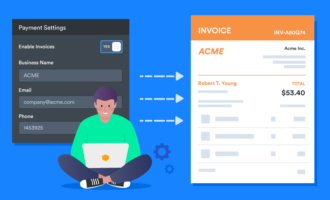

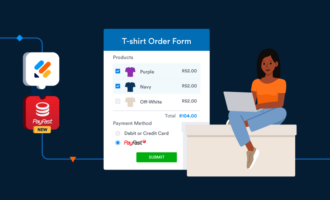





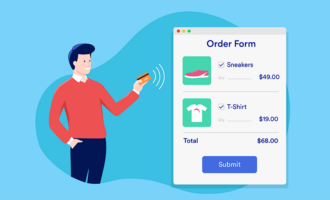

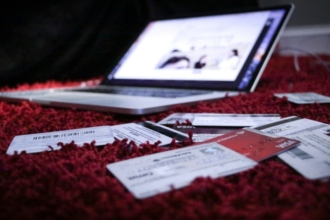
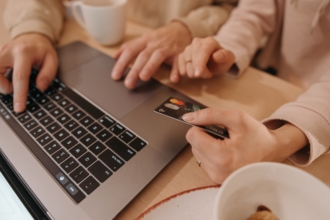

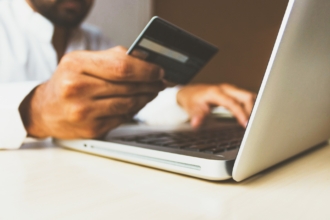
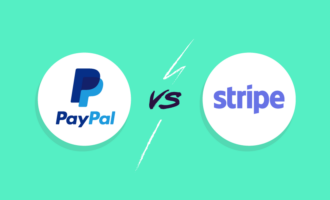
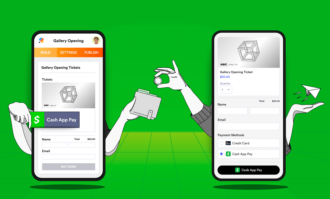

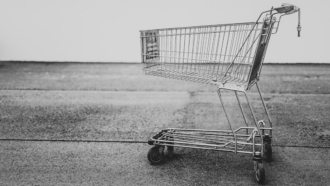


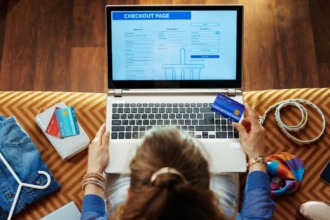

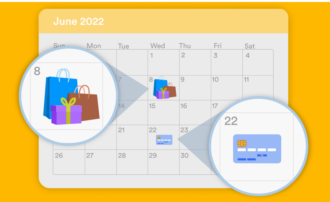
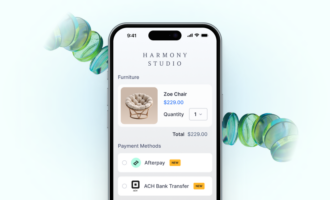

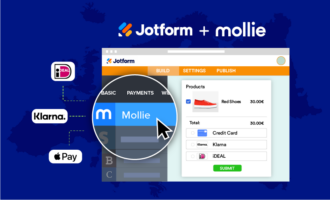
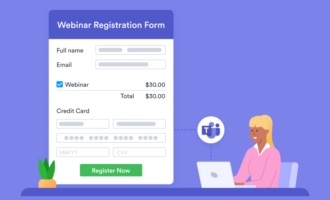

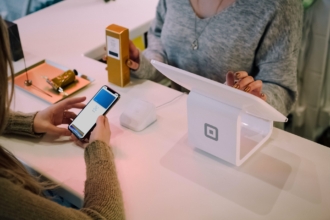

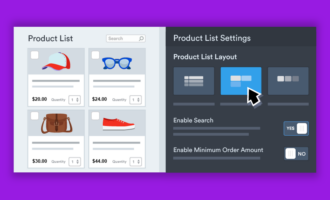


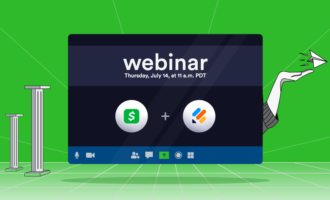
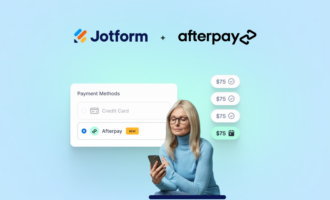
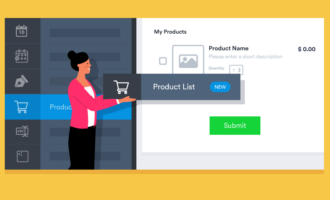

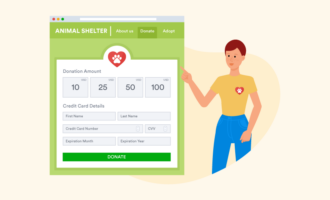
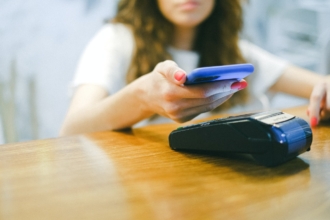

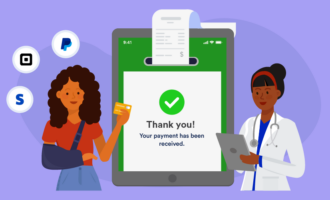
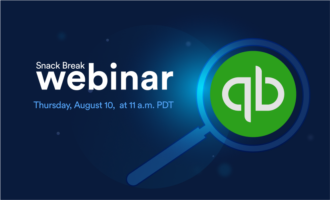

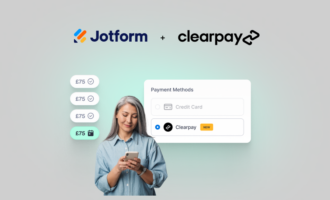
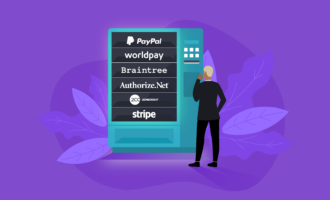

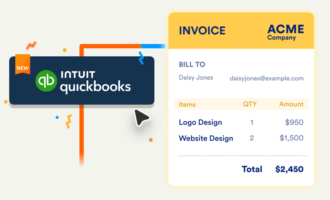


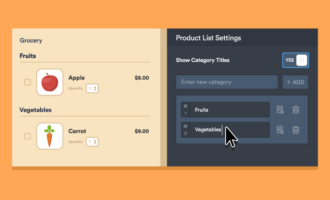

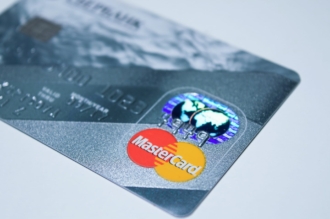

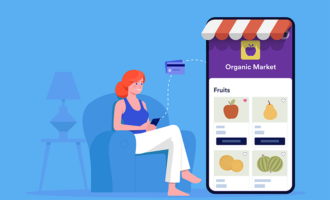
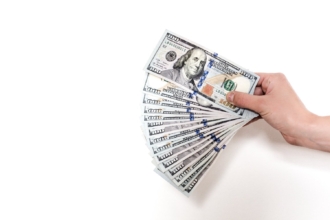
Send Comment:
1 Comments:
More than a year ago
Hey,
You did a great job man. Enjoyed reading the article above , really explains everything very well and also the article is very interesting and effective. This article gonna help me a lot. Thank you for sharing and good luck for the upcoming articles.